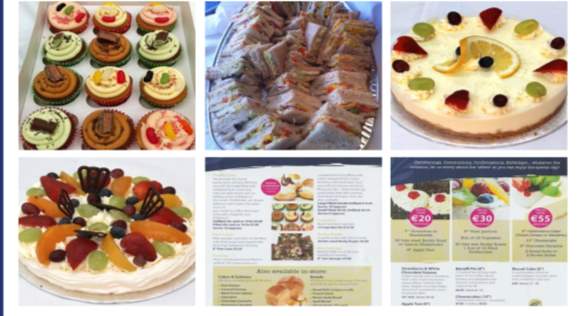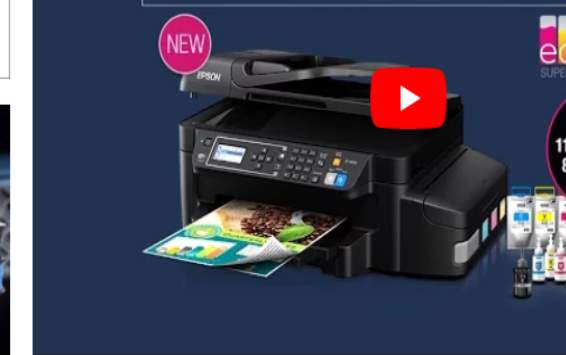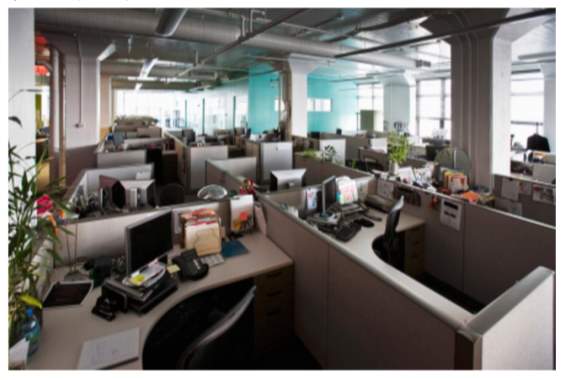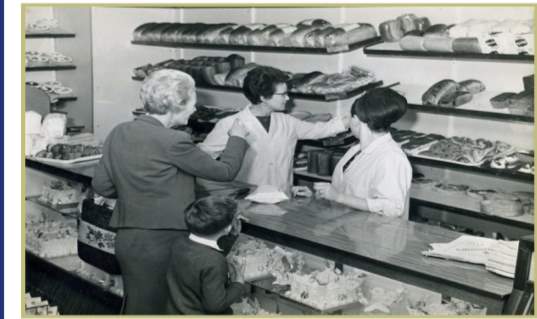O’ Connors Bakery Operations Evaluation
Info: 8480 words (34 pages) Dissertation
Published: 10th Dec 2019
Tagged: Business Strategy

 |
|
 |
Contents
Four Departments Within the Business
Duties and Responsibilities of two personnel within the:
Recruitment and Staffing Officer
Training and Development Officer
Three Pieces of Office Equipment
Minimum Notice and Terms of Employment Acts 1973-2001
Organisation of Working Time Act 1997-2014
Redundancy Payments Acts 1967-2014
Introduction
In this assignment we have been asked to select a company we are familiar with, or would like to work in, and report on it under the headings – Name of the Business, Legal Format, History, Location and the Products and Services it provides. I have chosen a local company O’Connors Bakery, here in Ennis, a confectionery and coffee shop. A place where, as a child, I was allowed to visit on special occasions to choose a birthday cake, or Christmas treats of mince pies and ginger bread men.
This Bakery has gone from strength to strength and has expanded from 1 shop in 1961 to now owning 8, and from a family run operation to a team of 145 staff. I will look at the Company from when it was just a dream of Pat and Marys, through its inception, start-up, and expansion. Using an organisational chart, I will list 4 departments within the company, their functions and the personnel working within them.
Through hard work and dedication this family run business has not only survived recessions and serious competition, but has held on to, and grown its loyal customer base. They credit their excellent highly skilled staff, some of whom are with the company over 40 years, with much of their success. O’Connors have kept up with changing times and trends and will continue in Ennis for many years to come.
Methodology
Much of the information included in this report has come from my own knowledge of this Company, I have also referred to some online material, as well as accessing their Facebook page, and local newspapers. They have their own website www.oconnorsbakery.com which contains hundreds of mouth-watering images of cakes and confectionery of all kinds, some of which I have included here.
O’ CONNORS CRAFT BAKERY
Is a Bakery which produces Breads, Confectionery and Cakes for sale in their shops and cafes, as well as homemade, gluten free soup, freshly made sandwiches, Panini’s, and wraps. Using, where possible, locally produced goods such as eggs, chicken, milk, and packaging. Operating since 1961 in Ennis Co Clare. It started out as just 2 people, husband and wife Pat and Mary O’ Connor. Now it provides employment for over 145 employees, many of whom have been with the company for over 40 years. Excellent customer service has helped establish O’Connor’s as a much-loved family business, in Clare and across the Mid-West. O Connors, in 2001, was the first bakery to apply for and win certification from the National Standards Authority of Ireland in Food Safety Management. (champion, 2017)
Legal Form of Business
O’ Connors Bakery is now a Private Limited Company, it began in 1961 with just 2 people and as the business grew they became a Private Limited Company in 1982, with their children and grandchildren along with Pat and Mary still running the company.
A Private Limited company, is usually a small company which is privately owned. It limits the owner’s liability to the shares they hold, it limits the number of shareholders, and restricts them from publicly trading the shares.
There are 8 elements needed to proceed with an Irish company setup:
- Company Name
- Type of Company
- Constitution
- Registered Office
- Directors
- Company Secretary
- Authorised and Issued Share Capital
- Shareholders
Advantages
It can be formed by as little as two people so this is the preferred form of business for small start-ups.
It is easy to get funding, and raise venture capital.
The liability to the shareholders is limited to the shares they hold.
The shareholders receive a dividend on the shares they hold if the company makes a profit.
Restrictions are:-
1. Shareholders, if they want to sell their shares, have to offer them to other shareholders first to see if they want to buy them.
2. Shareholders cannot offer their shares to general public over a stock exchange.
3.The number of shareholders cannot exceed a fixed figure.
History of the Company
For over 50 years Pat and Mary O’Connor have run their bakery in Ennis, Co Clare. 78-year-old Pat is still works in the bakery, while his wife, 75-year-old Mary, is up at 6am every morning making sure that her high standards are still being met there. It is that hard work and dedication that has helped O’Connor’s develop from a small bakery in Parnell Street to having shops in Clare, Limerick and Galway as well as a large modern bakery. While it is true that O’Connor’s have grown over the years, some things have not changed, many of the 145 staff having worked there for over 40 years, and most of the breads and confectionary still handmade like they were in 1961.
Pat and Mary met when they both worked at Pat’s aunt’s bakery in Kilkee. Later Pat went on to work as a pastry chef in Shannon Airport, they married in 1960, and opened their first shop a year later.
When the Bakery opened in Parnell Street in 1961, Pat was still working in Shannon every day. Rising at five o’clock in the morning they would both go to work in the bakery, Pat would then get the seven o’clock bus to Shannon and Mary stayed on in the bakery. When Pat came home each evening, they would begin all over again, working, usually, till one o’clock in the morning.
They opened their bakery on August 11,1961, to a slow start, however a few weeks later Ennis was hit by Hurricane Debbie, and some of the town was badly damaged by the storm, which meant extra workmen thus extra business for the bakery. They never looked back.
The business started out with 1 solid-fuel oven, for this they would bring large quantities of the fuel through the streets and store it down the back of the shop. It took hours for the oven to heat sufficiently every morning, in hindsight, they say, an electric oven would have a better idea!
Three years later, in 1964, Pat left the job in Shannon to concentrate on his own bakery, and open a second shop in the town’s main street, O’ Connell Street.
As the shops increased their business this put pressure on the bakery, and they decided the time had come to expand it. They didn’t have enough space at the back of the shop, and the distribution vans were getting bigger, needing room for parking etc. So in 1978, they bought a site on the Tulla Road, and in 1981 opened their new bakery, next door to their own home. In 1998 it doubled in size, and it now supplies their shops in Ennis, Shannon, Limerick, Gort and Galway, as well as some local retailers. O’ Connors have also grown into a coffee shop and sandwich business, and do a thriving lunchtime trade. Three of Pat and Mary’s family are working in the bakery, while eight of their grandchildren work in the bakery and shops on weekends and school holidays.
Customers’ tastes have also changed over the 50 years since they first opened their doors. They started with brown bread, and that is still as popular today. Fresh cream cakes were not a big seller back then; many people would not have had fridges to store them in, a fancy cake meant a plain sponge cake, with icing and with maybe “Happy Birthday” written on it. It was some years later, when their daughter Ann Marie trained as a confectioner, that this side of the business really took off. In keeping with the times, the bakery now has a Facebook page, and a busy and successful website, which is especially helpful when choosing specialised products like wedding and novelty cakes.
O Connors like to emphasise the fact that they are Craft Bakers, different from their bigger competitors, who use frozen products or substitute dried ingredients such as eggs and milk in production. O’ Connors like do things the old fashioned way, they have a highly skilled staff of confectioners and bakers, very little machinery is used and almost every product is hand finished.
O’Connors are, where possible, conscious of sourcing produce locally, for example they buy milk from a local farmer in Barefield and packaging for their boxes in Killaloe. Naturally, there are certain things that can’t be source locally, such as flour, which they buy from a miller near Paris. They say “ if you want to produce French bread, then obviously you need French flour”.
Obviously, the recent recession was of great concern, and they were very happy not to have had any staff redundancies, but O’ Connors are optimistic for their future. In the current market, the raw ingredients are going up in price, with places like China now competing for them. It’s amazing how global markets can affect even a small bakery like O Connors.
It is the bakery’s ability to keep up moving forward, as well as their excellent customer service that has helped make O’Connors a favourite, not only in Clare but across the Mid-West. In 2001 they were the first bakery to apply for, and achieve certification by the National Standards Authority of Ireland in Food Safety Management. They feel they are capable of meeting all of the challenges of the years ahead. (champion, 2017)
Location
Should you decide to visit one of their cake and coffee shops to treat yourself to a freshly brewed coffee and cake, and appreciate that all the confectionery served is baked in their own Bakery each morning.
Their shops are located in:
Francis Street, Galway (091) 561757
Salthill, Galway (091) 528035
Shannon Town Centre (061) 705291
Cruises Street, Limerick (061) 417422.
Shopping Centre, Ennis (065) 6822860
O’Connell Street, Ennis (065) 6822860
Parnell Street, Ennis (065) 6822860
Main Street, Gort (091) 631396
Products and Services
They produce Breads, Confectionery, and Cakes which they serve in their coffee shops, as well as homemade, gluten free soup, freshly made sandwiches, Panini’s, and wraps, only using organic Irish chicken and eggs in their sandwiches and salads.
They also offer an Outside Catering Service for private functions such as Confirmation and Communion.
They supply fresh cream confectionery locally, to some of the larger supermarkets such as Centra and Cost Cutters.

Wedding Cake Specialists

Novelty Cake Specialists

 Outside Catering Specialists
Outside Catering Specialists
Lunch and Coffee Menu
Four Departments Within the Business
All businesses, no matter what the size, need some sort of organizational structure to operate properly. Businesses without structure may have problems implementing company policies and operating at efficient production levels. Whether a company is selling or manufacturing, certain departments are key to basic operations. Departments such as Production, Sale & Marketing, Human Resources, and Finance.
The Four Departments I will look at today are:
- Production
- Sales & Marketing
- Human Resources
- Finance
Production
The roleof a productiondepartment is to make sure that the process of turning raw materials into products is carried out efficiently and accurately. The department has many functions to assist this process.
The first function is to set standards regarding the quality and the quantity of the products made. These standards are placed all through the process, not just at the beginning or end. The second function of the department is to work with the purchasing department to make sure there are enough materials for the production line.
They also work with the design and technical department to ensure the product is built to the correct specifications and to put any new designs or changes to the product onto the production line. The production department also works with the maintenance department to ensure there is a proper workforce available to check the quality of the product and make any necessary repairs to equipment.
The production department may not work directly with the marketing department, but it stays in touch with them to ensure the products will be attractive and desired by customers. (REFERENCE.COM, 2017)The production department itself will have many departments within it including – Purchasing, Storage, Distribution and Maintenance. Then depending on the size of the company, each department may have its own manager.
Sales and Marketing
The Marketing Department plays an important role in promoting any business. It serves as the face of the company, coordinating all products and materials representing the business.
It is the Marketing Department’s job to reach out to prospects, customers, investors and/or the community, and create an image or brand for you, that represents your company in a positive light.
It is their responsibility to increase market share and therefore contribute to the growth and profitability of the business. In a relatively small business like O’ Connors, the marketing department may just be one or two people, while in larger companies it may include a marketing director or manager, responsible for advertising, publications or events.
The Marketing department set a strategy, it may be to increase share in a specific market, for example, to open a new shop, or a new channel of distribution, such as the Internet, and Facebook, to reach a wider market. The marketing department reaches agreement with the management team before planning any marketing campaigns. Depending on the company, the duties of the Marketing Department may include one or more of the following: Market Research, Product Development, Promotion and Sales.
Human Resources
An efficiently run human resources department can provide an organization with structure and the ability to meet business needs through managing the company’s most valuable resources — its employees. Its function is critical because without it, the company would not be able to meet the essential needs of management and staff. It’s the people in an organization that carry out many important work activities.
The role of human resource management in organizations is to manage its people so that they can effectively perform these activities. This requires viewing people as human assets, not a cost to the organization.
The human resources department handles many necessary functions of the business.
It is instrumental in providing Labour Law Compliance, Record Keeping, Recruitment, Compensation, Performance Issues, Health and Safety, Training and Development, Advertising Job Vacancies, Negotiating with Trade Unions. Human Resources may include Recruitment, Training and Development and Health and Safety.
Finance
The Finance department plays a huge role in any business, because that’s where the money is. The finance department knows how much money is needed to pay out to clients, cover its bills and pay its employees.
This department is also in charge of filing tax receipts on time, keeping up with the current value of assets, and knowing how much cash flow the company has at any given time.
All money’s pass through the finance or accounts department of the business. In some larger companies they may need more than one department, and may also have payroll, accounts payable, and accounts receivable. The payroll department record employee hours worked, annual leave, sick leave time, sets salary or hourly rates and complies with tax regulations. The accounts payable department receives invoices from clients and contract employees, matches them to inventory or receipts and enters them into the system for payment. This department also prints and posts cheques for creditors other than payroll, or issues payments online. The accounts receivable department receives payments and makes sure that they are accurately entered into the system. Some finance departments may have a financial forecaster who monitors market trends to establish how much money the company could make from current and future projects.
In bigger companies, the finance department has a Chief Financial Officer, or CFO, they are responsible for managing all accounting and financial business for the company, also preparing financial reports and statements.
They decide how and where to spend money, and may asked help reduce costs for the company by sourcing cheaper alternatives for products or services. (REFERENCE.COM, 2017) It may include Financial Control, Accounts and Payroll
Organisation Chart
Duties and Responsibilities of two personnel within the:
Production Department
A foundation of any business, the production department may have responsibility for everything related to ordering materials, storage, design and maintenance. A good production department will endeavour to minimize cost of purchased goods, check quality and track orders from initiation to reception. An efficient production department can have a significant impact on a business’s profit margins. The role of the Purchasing Manager and Maintenance Manager are examined below.
Purchasing Manager
The role of the purchasing manager is to procure all necessary materials needed for production or daily operation of the company. For a baking company, this might include raw materials such as flour, sugar, eggs, butter, but it also might include packaging, machinery such as ovens and kitchen equipment, delivery trucks or even the office supplies and uniforms needed for the office and shop floor teams.
In a retail environment, the purchasing manager makes sure there is always sufficient product on the shelves or in the warehouses to keep the customers happy and keep the store well-stocked. With a small business, it is especially important to keep stock ordering at a reasonable level; investing large amounts of capital in excess stock could result in storage problems and in a shortage of capital for other expenses such as advertising or research and development. Purchasing also oversees all of the vendors that supply a company with the items it needs to operate properly.
The purchasing manager may also monitor storage space. Storage space is needed in every house, hotel, hospital, shop or business, and reaching capacity is a headache in any establishment, but especially in a production department.
For instance, a warehouse filled to capacity will hold nothing else, thereby eliminating your ability to store new stock. Managing the capacity of the facilities, machinery and workforce will keep the operation flowing smoothly and maximize the profit potential of the business. As will monitoring, receiving, storing, and issuing of materials, equipment, and other items from stockroom, warehouse, or storage yard, with proper record keeping.
They will also be involved in the movement and handling of goods. This can be manual or mechanical (e.g. by use of forklifts) heavy items, dangerous or inflammable goods, and delicate merchandise have all to be handled differently.
Packing goods for dispatch from one store to another at different location, can also be a duty of the purchasing manager. Materials require packing according to their nature and this may vary from heavy crates of flour to ordinary paper coffee cups. The goods then have to be despatched to the shop floor or supermarket customer. These include supplies for manufacturing or operating processes, plant maintenance, and office supplies.
MAINTENANCE
The importance of an effective maintenance manager cannot be overlooked because it plays such an important role in the efficiency of a company. Proper maintenance of all the equipment used is vital to the smooth running of the business. It is required to effectively reduce waste and run an efficient, and continuous manufacturing operation, or business. The cost of regular maintenance is very small when it is compared to the cost of a major breakdown at which time there is nothing being produced.
A good maintenance program requires company-wide participation and support by everyone ranging from the top executive to the shop floor personnel.
Must ensure efficient repair schedules are in place and review repair cost estimates.
Ensure that all equipment required for production is operating at 100% efficiency at all times. Through daily inspections where minor problems can be detected and corrected before they become a major problem that can shut down a production line.
Prioritize the maintenance and repairs of company equipment and parts. Ensure that all vehicles are cleaned, fuelled and in proper working order.
They might also be responsible for the building’s facilities, such as bathroom and kitchen repair and upkeep, and also grounds work.
Sales & Marketing Department
Market research is a key responsibility for any marketing department. Research helps the company identify market opportunities and gain a better understanding of customer needs. It also helps them understand competitors’ strengths and weaknesses so they can take action to protect business with existing customers or win business from weaker competitors. Many bakeries have come and gone in Ennis since O’ Connors opened, yet they continue to hold on to their loyal customers, and gain new ones on a daily basis. Their market research manager helps by carrying out research, studying industry reports, market data on websites, or by contacting customers to survey their needs and attitudes
Product Development Officer
O’ Connors bakery have their own product development team to develop new products or improve existing ones. They analyse sales of existing products and that identifies gaps in the product range where there may be opportunities for the company. Their Market researcher will help them identify customer needs and preferences, which allows them to improve existing products and to introduce new ones. Later in the product development process, the marketing department sets prices and prepares plans to launch the product.
The research paves the way for the development phase. This is the time when the new product is actually developed, based on the requirements and ideas created during the research phase. The developed product must meet the product guidelines and any regulatory specifications. The Quality Assurance Team have an intimate knowledge of the requirements and specifications of a particular project. This allows team members to ensure the products meet those standards so the company puts out quality products, it may collaborate with research and development on quality checks. In 2001 O’ Connors was the first bakery in Ireland to apply for and achieve certification by the National Standards Authority of Ireland in Food Safety Management.(champion, 2017)
Sales & Promotions Manager
Will plan campaigns to promote products and services to customers and prospective customers, such as advertising campaigns, e-mail marketing programs, create promotional content for the company website, write press releases or product publications, such as leaflets, brochures, or customer newsletters. They write and design their own promotional material, indeed the Easter, Halloween and Christmas window displays in O’ Connors always catch the eye and want to draw you in.
They run advertisements that include a reply mechanism, such as a coupon or telephone number, or by encouraging visitors to the company website or shop, to register their details with the possibility of winning a prize, such as an O’ Connors Christmas hamper, or Wedding Cake. The promotion and sales team also prepare presentations for wedding fairs etc. with stocks of promotional material to give to customers and prospects. . (BUSINESS.CHRON, 2017)
Human Resources Department
The human resources department acts with the management team to strategically manage and organise its staff. This includes recruiting and hiring employees, coordinating employee benefits and suggesting employee training and development strategies, pensions, annual leave and many more functions.
Recruitment and Staffing Officer
Will advertise jobs, source candidates, screen applicants, conduct preliminary interviews and coordinate with the managers responsible for making the final selection. They also deal with disciplinary issues, staff dismissal, trade union negotiating and appraisals. O’ Connors have a staff of 145 employees, some of whom are with the company over 40 years, and will soon be considering retirement, and pension, this will also be dealt with in the HR department.
Training and Development Officer
Will train and mentor new employees to help them settle into their new position, also providing leadership and professional development training for newly promoted supervisors and managers on topics such as performance management and how to handle employee relations matters at the department level. Also employees looking for promotional opportunities or who want to achieve personal goals such as finishing a college degree, will do so with the help of the training and development officer. (BUSINESS.CHRON, 2017)
Health and Safety in the workplace is an important area in organisation, and may be part of either of the above job descriptions, covering such tasks as risk assessment, workstation assessment, and fire drills, employers have an obligation to provide a safe working environment for employees. One of the main functions of HR is to support workplace safety training, in the Bakery, dealing with large ovens at high temperatures, it is understandable that burns will happen, and under the Safety, Health and Welfare at Work Act 1998-2007, mandatory logs for workplace injury have to be recorded and reported.
Finance Department
Money is the lifeblood of any business and the finance department is at its nerve center. It is required to advise on business growth, assets, stock and share price if appropriate. The finance department focuses on being reactive, efficient, and risk averse. The finance department looks after all the money going in and out of the company. It provides information to assist management in making strategic decisions regarding the day to day and long-term development of the business by determining how, when and where it should spend money, and find cheaper alternatives to expensive products or services.
In order to maintain good relationships with vendors, making sure that everyone gets paid on time is a vital role. The role of the accounts manager includes keeping an eye on opportunities to save money, for example, determining if there are discounts or incentives available for paying certain vendors more quickly. They have to account for and keep on top of outstanding invoices and any necessary collection actions. Their responsibility includes ensuring that customers pay invoices on time, and if not issuing friendly reminders are crucial.
Also the accounts manager in a small company like O’ Connors may have to deal with payroll, making sure all employees are paid accurately and on time.
Proper tax is assessed and tax payments are made on time. Also overtime pay is processed accurately and on time.
Financial Controllers are key players within any company, dealing with financial accounting, preparation, reporting, and analysis. They look after day to day financial issues. They collect data to prepare financial statements that can be used for budgeting, forecasting and other decision making processes. These and other reports may be needed for investors, banks and accountants who play a role in the growth of the business.
Financial controllers follow strict standards of accounting principles, which have to be adhered to with view toward compliance, fraud and theft prevention. The role of the Controller is to ensure procedures are set up properly to manage that process accurately. (PCG, 2017)
THE FUNCTIONS OF AN OFFFICE
Office The word itself generally makes one think of a physical room in a building where business is conducted. It is usually where the clerical duties are performed, and is sometimes considered the hub of a company, as all phone calls, correspondence and even clients may pass through it. Depending on the type and size of the company, it can be where a Sole Trader keeps his records in a small corner of his house, or a Public Limited Company, which may have many offices over many floors of its Headquarters. If you are a Sales Rep your office may be your car, or a stay at home mum, a desk in your living room. No matter where you call your Office, it is the place you have designated to Receive, Give, Record and Store information and Administer your business from and to store any necessary equipment.
Receiving and giving information can involve many sources, Internally from other divisions or departments, or externally from letters, invoices, phone calls or visitors to the office. This information has to be recorded, arranged and stored, so that it is readily available.
The office may need to act in an administrative role in planning, organizing meetings, presentations or trips for the department or company managers.
The Office can also be the reception service and therefore the first connection a client has with the company, it needs to be welcoming and professional and inspire confidence in the client.
The office is also responsible for the purchase, issue and control of stationery as well as the upkeep of office equipment, such as printers, computers, and shredders. It may also, depending on the size of the company, be involved in the recruitment and training of staff.
Three Pieces of Office Equipment
If we were to look around any office today, be it large or small, we would see that most of us have, at least some of the basic pieces of office equipment. Computer, Printer, Scanner, Shredder, Telephone, Photocopier, as well as the staplers, punchers, pens and pencils. Here I will describe some of those items, with their functions and benefits.
- Colour Laser Printer
- Computer
- Shredder
Colour Laser Printer
Colour laser printers produce high quality print, in both black & white and colour, and are an excellent addition to any business or home office. They have become very affordable in recent years and are a worthy alternative to ink printers, as well as providing fast, efficient mono printing, they also print coloured material like flyers, leaflets, reports, etc.
It is important to consider, before buying any printer, the type and quantity of documents that you will need printed. Colour laser printers deliver great quality, sharp text and graphics, at high speed, for both colour and black and white, this speed is substantially higher than inkjet printers. Basic colour laser printers can print 10-15 black and white pages per minute and 4-5 colour pages per minute;. (post, 2017)

Computer
The most commonly used computer in offices today, is still the traditional desktop PC. They are usually more comfortable to use than a laptop, and they can be easily maintained and upgraded, and they don’t need to be replaced by a new model every couple of years. Computers have come a long way in the last 20 years and took over from the humble typewriter on the clerical side of office work such as, letters, mail merge, labels and filing. They are also invaluable in the office for research, graphics and tables and many many other functions.
One of the most common uses of computers in any office, is to communicate with others inside and outside the workplace. Instead of trying to reach people by phone many business people prefer to communicate via email, which is often faster and more efficient. Many people also use word processing software to write letters, memos and reports. Some companies use software to produce their brochures and promotional material. (post, 2017)

Shredder
A papershredder is a piece of office equipment used to cut into strips and destroy private, confidential, or otherwise sensitive paper documents. There are many reasons why owning a shredder is an asset to any office.
Using a shredder means that sensitive materials do not fall into the hands of unauthorised personnel.
By shredding documents, the size of the waste that your business produces can be reduced, making waste management more effective and decrease costs if charged by weight.
Owning a shredder can also reduce costs if a specialist collection service has to collect and shred your confidential waste. The long-term difference between having your own shredder and paying for shredding services can be huge. A shredder increases security, eliminating the necessity to send your sensitive data out to be destroyed.
With a shredder the need to manage, store and organise documents that need to be destroyed is eliminated as they can be destroyed immediately. (post, 2017)

WORKPLACE LEGISLATION
Ireland is one of Europe’s most highly regulated environments in the area of employment law, the legislation is there to protect both the employer and the employee. It covers many areas relating to the work environment, Acts such as Terms of Employment, Minimum Notice, Redundancy, Equality, Pay, Unfair Dismissal, Safety, Health and Welfare and many more. Today I will take a brief look at 3 of these Acts:
- Minimum Notice and Terms of Employment Acts 1973-2001
- Organisation of Working Time Acts 1997-2014
- Redundancy Payments Acts 1967-2014
Minimum Notice and Terms of Employment Acts 1973-2001
Notice periods, there can often be confusion as to what staff are entitled to with regards to their notice period, particularly if there is no contract of employment in place. It is important, therefore, for employers to be aware that the issue is regulated by its own specific legislation, namely the Minimum Notice and Terms of Employment Acts 1973-2001, which outlines employers’ obligations in respect of giving appropriate notice periods to employees. The statutory minimum notice periods in Ireland are determined by the length of service the employee has. These Acts entitle employees who are in employment for 13 continuous weeks’ minimum notice from their employer.
Notice periods should always be clearly outlined in an employee’s contract of employment, as they can often become a hot topic if an employment relationship breaks down, therefore, clear guidelines on notice periods can help to overcome this.
An employee who has worked for 13 continuous weeks is obliged to give one week’s notice to his/ her employer when resigning, unless there is a written contract of employment that provides for a longer period, in which case this notice period must be given.
Employment contracts can be terminated in a variety of ways, such as dismissal, redundancy, or insolvency. Employers should be familiar with the rules relating to termination of employment in any of these. To justify a dismissal, an employer must show that it either resulted from one or more of the following causes:
- the capability, competence or qualifications of the employee for the work s/he was employed to do; (b) the employee’s conduct; (c) redundancy; (d) the fact that continuation of the employment would contravene another statutory requirement; (e) that there were other substantial grounds for the dismissal.
Employee benefits, regardless of having a permanent, fix term or part-time contract, an employee needs the security of knowing that if they have been employed for more than the 13 weeks, have to be given the statutory notice of termination of their job.
Employer benefits, the advantage of having this act in place for the Employer, is in knowing that their employees also have to give notice, giving them the security of knowing that they will have a workforce in place every day. (information, 2017)
Organisation of Working Time Act 1997-2014
The Organisation of Working Time Act 1997 states that the maximum average working week for many employees cannot exceed 48 hours. This does not mean that a working week can never exceed 48 hours, it is the average that is important. The average may be calculated in one of the following ways:
Over 4 months for most employees
Over 6 months for employees working in the security industry, hospitals, prisons, gas/electricity, airport/docks, agriculture and employees in businesses which have peak periods at certain times of the year such as tourism.
Over 12 months where there has been an agreement between the employer and the employees to this effect. The agreement between employer and employees must be approved by the Labour Court.
The calculation of 48 hours does not include annual leave, sick leave or maternity/adoptive/parental leave.
The legislation also lays down rules for night workers, minimum breaks and rest periods. There are also special provisions in relation to Sunday working
For many employees the hours of work are specified, for example, in their contract of employment or in an Employment Regulation Order or Registered Employment Agreement. If the hours of work are not specified, under Section 17 of the Act, the employer must notify the employee of the starting and finishing times at least 24 hours before the first day or the day of each week the employee is required to work.
This Act does not apply to the Gardaí, Defence Forces, employees who control their own working hours or family employees on farms or in private homes. The working hours of young people under the age of 18 are regulated by the Protection of Young Persons (Employment) Act 1996. (information, 2017)
There are separate regulations governing the working time of trainee doctors, employees working in mobile road transport activities and employees working at sea. Employees in certain categories of civil protection services are currently exempt from provisions on maximum average working week and statutory rest breaks/periods.
Employees benefit from this Act by knowing what their hourly, daily, weekly and monthly work roster is, and can plan their lives accordingly.
Employers’ have a legal duty to keep detailed records of employees’ starting and finishing times, the number of hours worked by employees and any leave taken by employees.
Employers benefit from this legislation, they know exactly when and how many staff they have on their company floor at any 1 time, in that way they can prepare for busy periods when they will need extra staffing, holiday cover, maternity and paternity cover or extended sick leave. (information, 2017)
Redundancy Payments Acts 1967-2014
Where you lose your job due to circumstances such as the closure of the business or a reduction in the number of staff this is known as redundancy.
A minimum entitlement to a redundancy payment for employees who have a set period of service with the employer, is provided for in the Redundancy Payments Acts 1967–2014. Not all employees are entitled to the statutory redundancy payment. In order to comply with this legislation, there are specific redundancy procedures which employers and employees must follow. However, the employee and the employer may agree a redundancy payment above the statutory minimum, meaning that, employees who have not reached the statutory minimum period of service may also receive a payment. Statutory redundancy only applies to employees with two years’ service or more. But, in some situations, an employer might agree to pay a lump sum to employees with less than two years’ service. (m.welfare.ie, 2017)
A redundancy situation usually happens, where a job no longer exists and the employee is not replaced.
Under the Redundancy Payment Scheme, on being made redundant, all eligible employees are entitled to a statutory redundancy lump sum payment. An employee is entitled to two weeks’ pay for every year of service, with a bonus week added on, subject to the prevailing maximum ceiling on gross weekly pay which is €600 with respect to redundancies notified and/or declared on or after 1st January 2005.
An employee must have at least two years’ continuous service (104 weeks) to qualify for statutory redundancy. An employer who is making an employee redundant must give appropriate notice to the employee according to the length of service under the Minimum Notice and Terms of Employment Acts 1973 – 2005 or the employee’s contract.
Notice of redundancy, in writing, is required two weeks before the termination of employment. This can be done either by using Part A of the RP50 form or by informing the employee in writing of the redundancy. The employee should not sign Part B of the RP50 form until they have actually received their redundancy payment.
The Redundancy Payments Acts 1967 to 2014 provide that the redundancy lump-sum must be paid direct to the employee.
Collective redundancies: Where collective redundancies happen, employers are obligated to consult with the employee representatives at least 30 days before the dismissal takes place see if they can be avoided or their effects diminished.
Employees Benefit: Even though no one likes the thought of being made redundant, employees benefit from this Act as they know that if it happens they will have a lump sum to ease the pain until they gain employment again.
Employers Benefit: As with employees, employers never want to contemplate having to make cut backs in staff or complete closure of their business. However, it does happen and when it does it is a consolation for the employer to know that his workforce will be taken care of financially until they return to work. (information, 2017)
BUSINESS.CHRON, S., 2017. SMALL BUSINESS.CHRON.COM. [Online]
Available at: WWW.SMALLBUSINESS.CHRON.COM
[Accessed 27TH NOVEMBER 2017].
champion, c., 2017. clare champion. [Online]
Available at: http://clarechampion.ie/a-business-recipe-still-working-after-50-years/
[Accessed 5 december 2017].
food, e., 2017. ennis food festival. [Online]
Available at: www.ennisfoodfestival.com
[Accessed 4th dec 2017].
information, c., 2017. citizens information.ie. [Online]
Available at: http://www.citizensinformation.ie/en/employment/employment_rights_and_conditions/hours_of_work/working_week.html
[Accessed 7 december 2017].
m.welfare.ie, 2017. m. welfare.ie. [Online]
Available at: https://m.welfare.ie/en/Pages/Redundancy-Payments.aspx
[Accessed 7 december 2017].
PCG, 2017. PCG-SERVICES.COM. [Online]
Available at: www.pcg-services.com
[Accessed 27TH NOVEMBER 2017].
post, n., 2017. neo post.ie. [Online]
Available at: https://www.neopost.ie/service/frequently-asked-questions/what-shredder
[Accessed 7 december 2017].
REFERENCE.COM, 2017. REFERENCE.COM/BUSINESS-FINANCE/ROLE-PRODUCTION-DEPARTMENT. [Online]
Available at: www.reference.com/business-finance/role-prduction-department
[Accessed 27/11/2017 NOVEMBER 2017].
Cite This Work
To export a reference to this article please select a referencing stye below:
Related Services
View allRelated Content
All TagsContent relating to: "Business Strategy"
Business strategy is a set of guidelines that sets out how a business should operate and how decisions should be made with regards to achieving its goals. A business strategy should help to guide management and employees in their decision making.
Related Articles
DMCA / Removal Request
If you are the original writer of this dissertation and no longer wish to have your work published on the UKDiss.com website then please:





